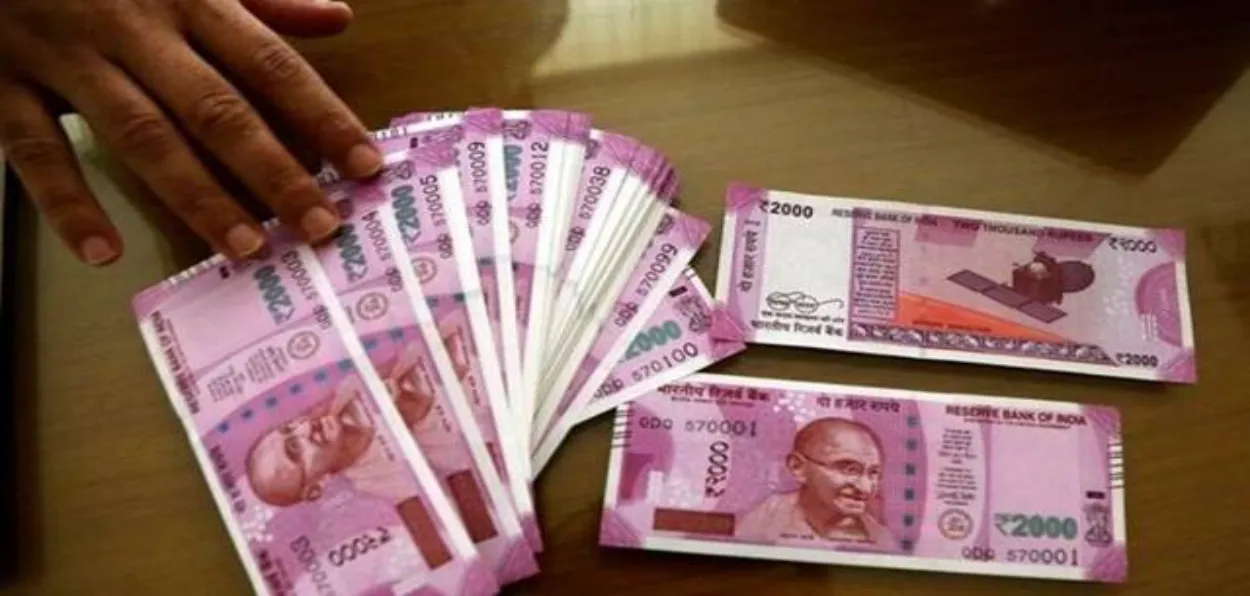
 Sushma Ramachandran
Sushma Ramachandran
The use of cash for making payments is increasingly considered obsolete in India. Recently I hired a driver and assured him that any parking charges would be reimbursed. The young man said he only used Paytm for payments and the wallet could be used to compensate him too. He never carried cash and was amused at my using currency notes.
The anecdote illustrates the enormous change that digital payments have brought about in recent years. Even parking attendants take payments via wallets or UPI and the smallest vendor can offer a QR code for scanning. It is against this backdrop that one must view the latest decision of the Reserve Bank. of India to withdraw currency notes of the denomination of Rs. 2000 from circulation. The impact of this withdrawal is likely to be felt only by those who are hoarding these notes or those who still rely on cash transactions.
The reasons for the withdrawal are not, however, aimed at flushing out black money or promoting digital payments. The RBI has clarified in a statement that the withdrawal of these notes is in line with what is termed the “clean note policy” and the fact that these had been introduced as a temporary measure to increase currency in circulation at the time of demonetization in 2016.
The clean note policy which was introduced initially in 1999 aims at providing citizens with high-quality currency and coins. Towards this end, banks have been directed to provide good quality notes to customers and avoid writing on them while providing an exchange for soiled or damaged notes. The policy was updated in 2018 but the objective continues to be the same. Thus the Rs. 2000 notes which have been in circulation for the last seven years have now outlived their life span. Printing of the notes also stopped about three years ago.
On the Rs. 2000 notes being a temporary measure, the RBI has explained that these had been introduced as the earlier Rs. 500 and Rs. 1000 notes had been withdrawn from circulation at the time of demonetization. As soon as currency notes of other denominations became available in sufficient quantities, the aim of bringing in the Rs. 2000 notes had been met. Besides, since the printing of the notes ended in 2018-19, most of the notes were at the end of their intended life span. Since the central bank had stopped printing them, the total quantity of notes in circulation declined from 6.73 lakh crore in 2018 to 3.62 lakh crore in 2023. Currently, these comprise only 10.8 percent of the total currency notes in circulation.
Since there is a great deal of speculation over the need to withdraw these notes, the RBI has pointed out that the denomination is not commonly used for transactions.
Besides, it observes that the stock of banknotes in other denominations is sufficient to meet the currency requirement of the public.
The withdrawal of Rs. 2000 notes are also being compared to the demonetization exercise in 2016. The fact is, this is a vastly different exercise. For instance, the demonetization was carried out suddenly and without any warning. In this case, the announcement was made well before the scheduled date to exchange these notes on May 23. In addition, unlike in the case of demonetization, the notes will continue to be legal tender till September 30. The status of these notes after that date has yet to be specified by the RBI but clearly, there is no hurry to go to banks and exchange the notes being held by citizens.
At the same time, it must be conceded that many traders and small businesses are now reluctant to accept them in normal transactions though the central banks say these continue to be legal tender. There have also been reports of the jewelry trade accepting the notes at a premium to the current gold price. Yet ultimately even jewellery merchants will have to deposit these with banks.
The result is that the RBI may have passed a fiat saying the notes are legal tender but that does not mean that these will be acceptable in the world of trade and commerce. Agencies that accept the notes will have to either exchange or deposit them in banks which can be a cumbersome task. To that extent, the central bank needs to take responsibility for the burden being put on ordinary citizens in dealing with a currency that is now being withdrawn.
To deal with this issue, the RBI could instead have given a longer time frame for exchanging these notes. For instance, it could have been done over a one or two-year period. This would have also given time to Indians living overseas who tend to keep Indian currency ready for their visits to this country. At the time of demonetization, many Non-Resident Indians were not able to visit India in time to exchange their Rs. 500 and Rs 1000 notes. This caused tremendous losses to many in the diaspora.
Giving a longer time frame would also reduce the likelihood of businesses rejecting transactions involving the Rs. 2000 notes and simultaneously give a lifeline to the overseas Indian community.
Having said that, there is no doubt that the withdrawal of Rs. 2000 notes is not going to be a disruptive process for the common man. Plenty of time has been given for either exchanging or depositing the notes at banks, though a longer time frame may have been more helpful. It can be viewed more as a clearing-up procedure that will ensure that hoarding of large denomination notes is avoided as far as possible. The banking authorities have wisely decided not to term this as an anti-black money operation as it may have a limited impact in this direction. Given the trend of digital payments in this country, however, such currency changes are going to have an increasingly reduced impact on economic activities.
